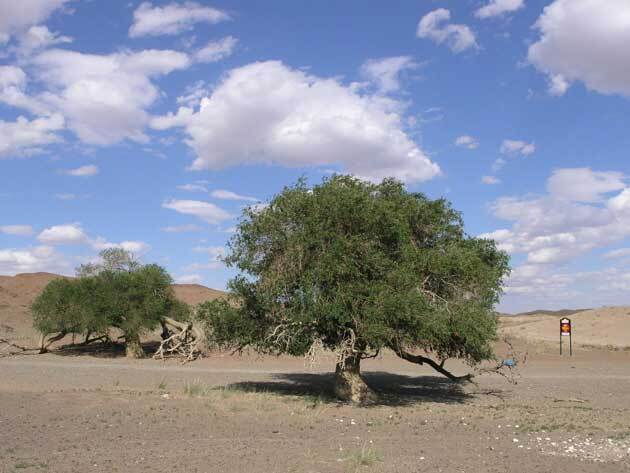
🌿 Morphology
🌞 Growing conditions
🌍 Origin and family
🌾 Uses
Warning: Despite the care taken in writing this sheet, it is essential to cross-reference sources before using or consuming any plant. When in doubt, consult a qualified professional
Permaculture uses
Siberian elm is valued in permaculture for its rapid growth, windbreak capabilities, and soil stabilization properties. It can be coppiced for fuelwood. Leaves can be used as livestock fodder, although palatability varies. It is also sometimes used for hedging and screening. While not widely consumed, the inner bark is edible in survival situations. It can tolerate poor soil conditions and drought.
Permapeople description
Ulmus pumila, the Siberian elm, is a tree native to Central Asia, eastern Siberia, the Russian Far East, Mongolia, Tibet, northern China, India and Korea. It is also known as the dwarf elm.
Botanical description
Ulmus pumila, commonly known as Siberian elm, is a deciduous tree native to Central Asia, eastern Siberia, the Russian Far East, Mongolia, Tibet, northern China, India and Korea. It is a medium-sized tree, typically reaching 50 to 70 feet in height, with a rounded crown. The leaves are alternate, simple, ovate to lanceolate, and finely serrated. The bark is gray-brown and becomes furrowed with age. The flowers are small, greenish, and appear in early spring before the leaves. The fruit is a samara, a dry winged seed. Ulmus pumila is known for its fast growth rate and adaptability to various soil conditions, including poor, dry soils. It is also relatively resistant to Dutch elm disease compared to other elm species.
Companion planting
Siberian elm can be used as a windbreak for more sensitive plants. Due to its dense root system and potentially allelopathic properties, it may compete with nearby plants for resources. Consider companion planting with nitrogen-fixing plants to improve soil fertility. Avoid planting near slow-growing or shade-intolerant species.
Propagation methods
Siberian elm can be propagated by seed, cuttings, and root suckers. Seed propagation is most common, although germination rates can vary. Cuttings, especially root cuttings, can be taken in late winter or early spring. Root suckers can be dug up and transplanted.
History and traditions
Siberian elm has been used traditionally in its native regions for various purposes, including firewood, construction, and medicinal applications. The bark has been used in traditional medicine to treat skin ailments and other conditions. It was introduced to North America in the early 20th century as a fast-growing shade tree and windbreak.
Usage calendar
Flowering: Early Spring (before leaves appear). Seed collection: Late Spring to Early Summer. Planting: Spring or Fall. Pruning: Late Winter or Early Spring (dormant season). Coppicing: Late Winter.
